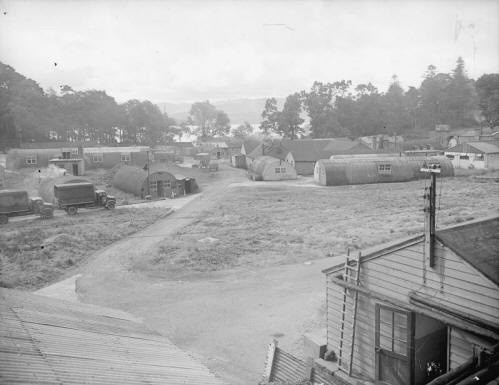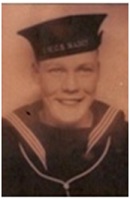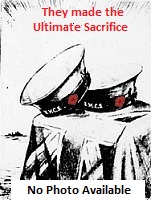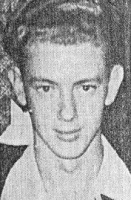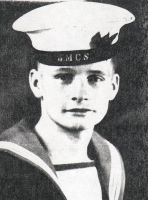|
HMS QUEBEC
No.1 Combined Training Centre, Inveraray, Scotland
HMS Quebec was a Combined Operations establishment, situated on the upper reaches of Loch Fyne, Argyllshire, some two miles from Inveraray. The base derived its name from the historical operations which resulted in the capture of Quebec in 1759. Roads in the establishment were named after Admiral Saunders and Admiral Holmes, both of whom had distinguished themselves in this operation. The foreshore was named "The Caronage," the name given to that part of the beach where old-time sailors careened their ships.
Commissioned on the 1st May, 1941, the main functions of the base were to train and accommodate naval landing craft crews, to accommodate officers and men in "pool" awaiting draft and such crews as were used in combined training by C.T.C., Inveraray.
The base was also to have extensive repair and storage facilities and to carry the pay accounts of some thousands of Combined Operations ratings. The usual growing pains were experienced in opening the camp, which first consisted of twelve wooden huts, the necessary galleys, pay offices and a small canteen. The huts were built on stilts, as the ground was wet and boggy and not, as at the present time, well drained. The situation on the shores of Loch Fyne was extremely practical as well as being picturesque. A steel pier was erected and this could be used at any state of the tide by landing craft. A gently sloping beach, with protection from all but S.W. gales, ensured the easy handling of craft for repair and maintenance.
Some 450 officers and men were in camp by the middle of May, 1941, and work went on apace in further construction. Engineering workshops, boat slips, the Wrennery and a well fitted sick bay were completed. Training, which had up to that time been carried out from various ships moored in the Loch, now settled down to a steady cycle, twelve officers and 150 seamen arriving from H.M.S. Northney every fortnight. Flotillas were commissioned for the Lofoten, Vaagso and Spitzbergen raids and both day and night training was carried on by these crews operating with the C.T.C.
A rifle range and assault course were built on the rising ground behind the camp and the whole area resounded to Lewis, tommy-gun and rifle fire and grenade explosions. Newton, an almost uninhabited spot on the opposite side of the Loch, was now being used as a training ground for assault landings, and Quebec supplied craft and crews to work with Major Landing Craft Flotillas and the military units in both day and night operations. ( Source: Combinedops.com )
* The name in brackets below each sailor's entry is the vessel in which they were on when they died.
|

